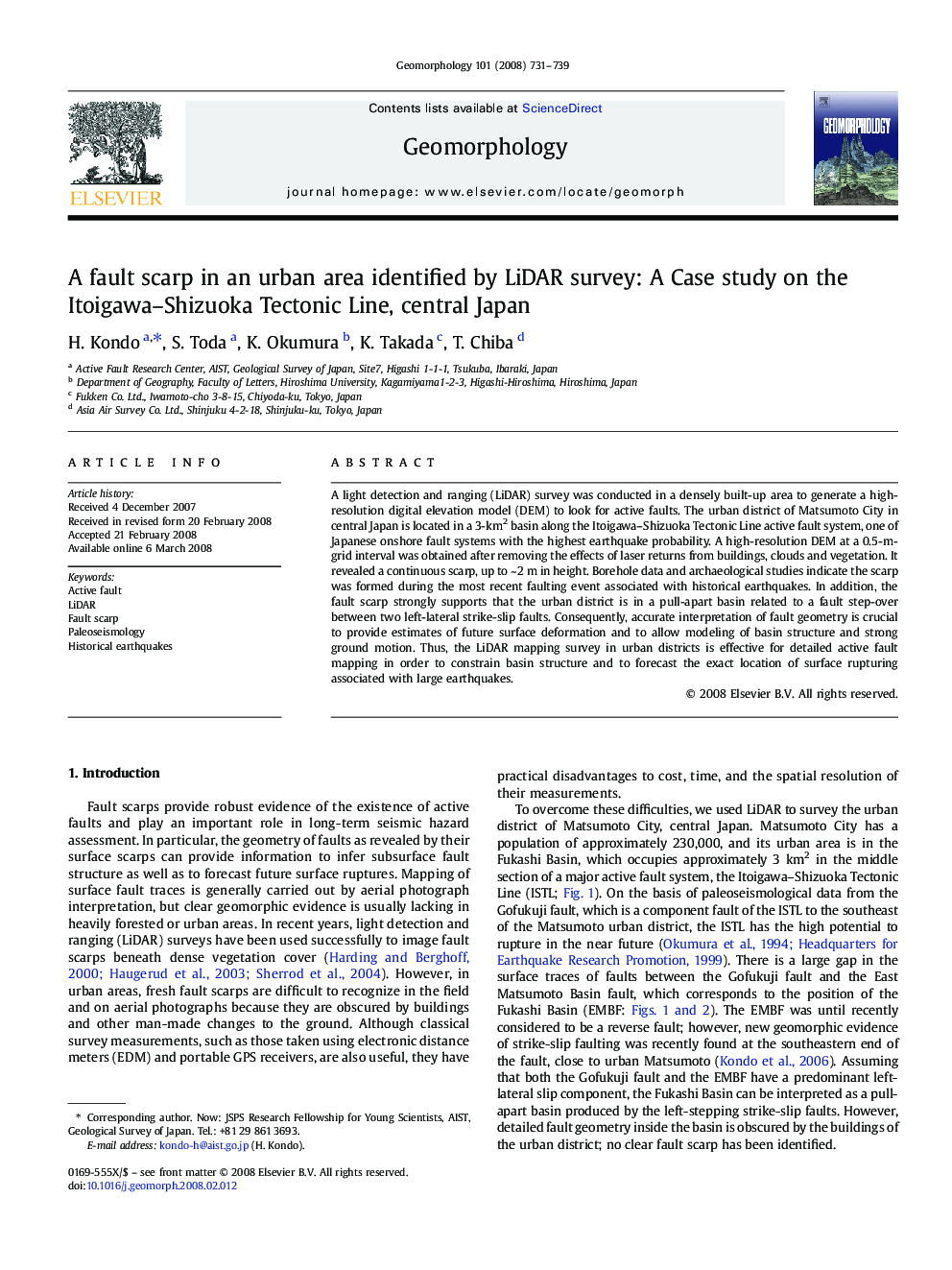| Article ID | Journal | Published Year | Pages | File Type |
|---|---|---|---|---|
| 4686592 | Geomorphology | 2008 | 9 Pages |
A light detection and ranging (LiDAR) survey was conducted in a densely built-up area to generate a high-resolution digital elevation model (DEM) to look for active faults. The urban district of Matsumoto City in central Japan is located in a 3-km2 basin along the Itoigawa–Shizuoka Tectonic Line active fault system, one of Japanese onshore fault systems with the highest earthquake probability. A high-resolution DEM at a 0.5-m-grid interval was obtained after removing the effects of laser returns from buildings, clouds and vegetation. It revealed a continuous scarp, up to ~ 2 m in height. Borehole data and archaeological studies indicate the scarp was formed during the most recent faulting event associated with historical earthquakes. In addition, the fault scarp strongly supports that the urban district is in a pull-apart basin related to a fault step-over between two left-lateral strike-slip faults. Consequently, accurate interpretation of fault geometry is crucial to provide estimates of future surface deformation and to allow modeling of basin structure and strong ground motion. Thus, the LiDAR mapping survey in urban districts is effective for detailed active fault mapping in order to constrain basin structure and to forecast the exact location of surface rupturing associated with large earthquakes.
